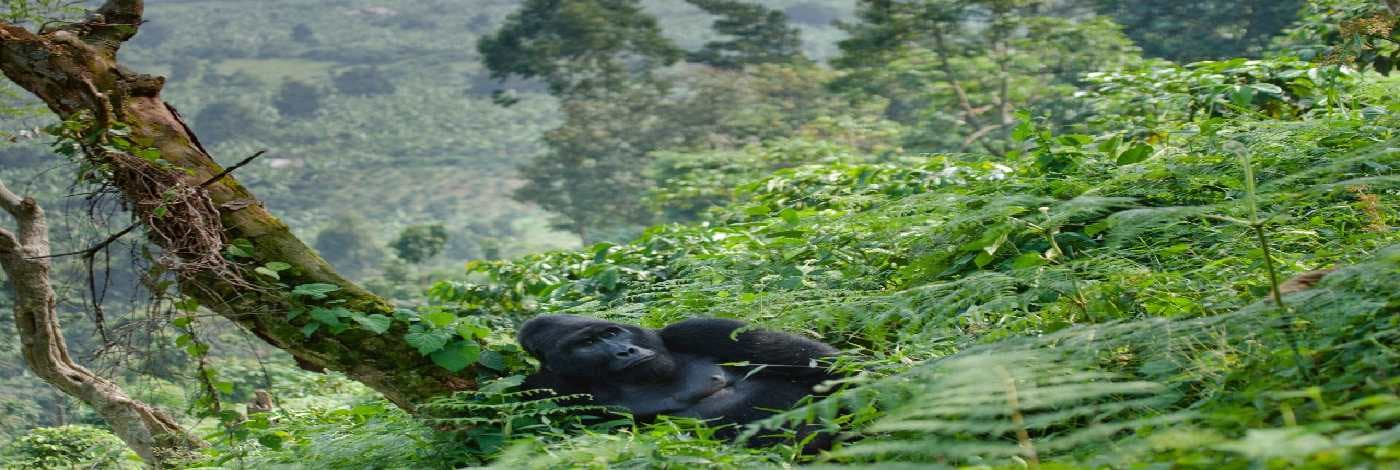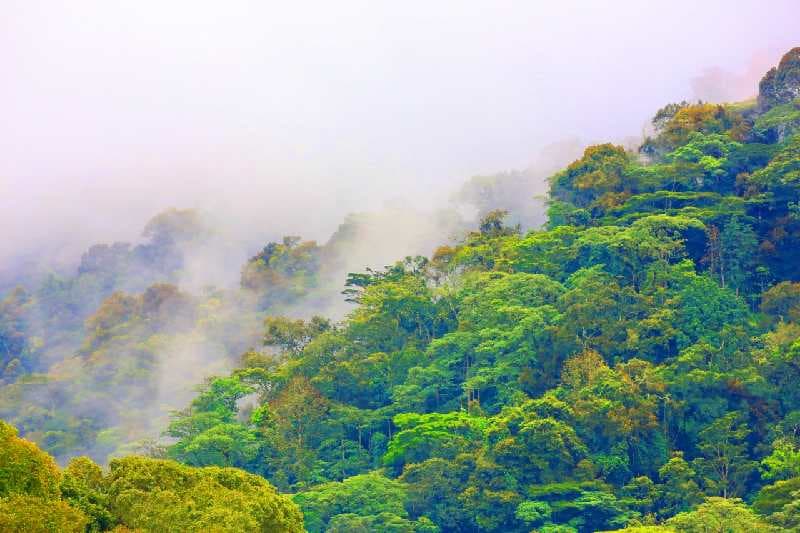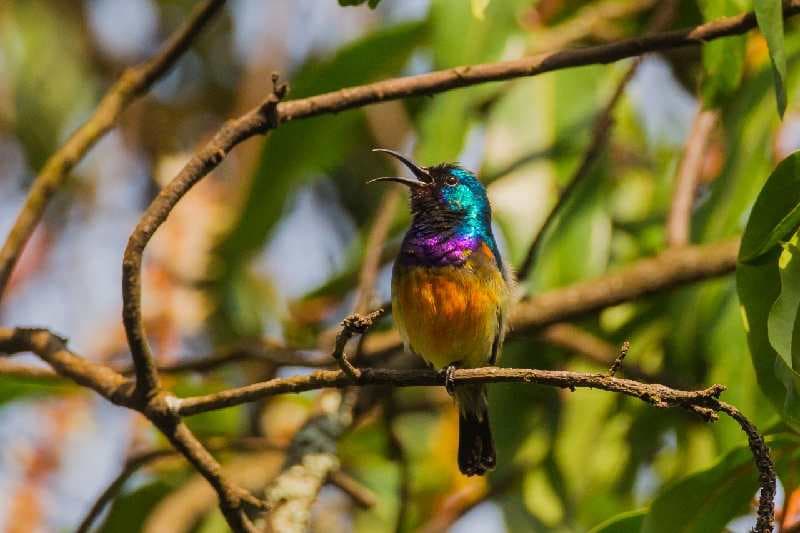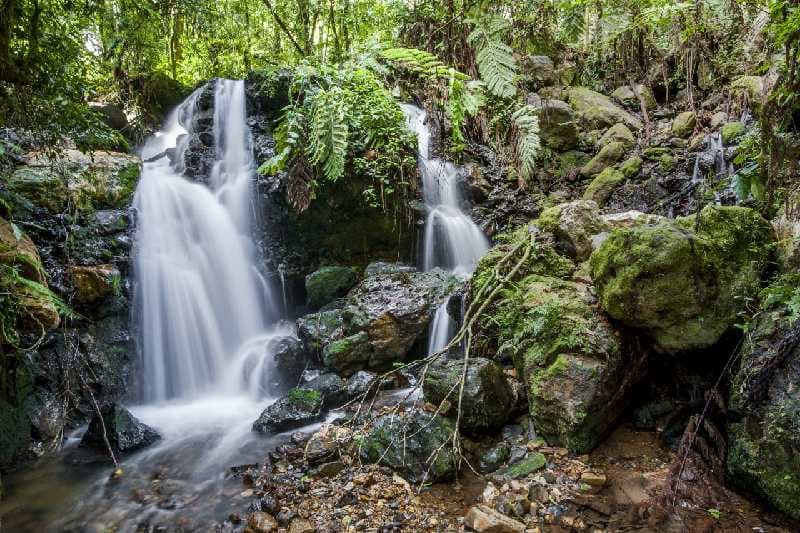
The only home is known to almost half of the world's alive mountain gorillas and Africa’s most famous national parks. It is Bwindi Impenetrable National Park. Being set over 331 sq Km of steep mountains rainforest, Bwindi National Park is home for more than 340 gorillas making it Uganda's biggest tourist attractions with no doubts.
The word "Bwindi" means "darkness" and taking a hike in this park will make you realize why it is named so. The Park is called as impenetrable. It requires to be physically fit to join the gorilla trekking adventure as it involves climbing steep mountains. Bwindi Forest, with its dense trees, in Uganda appears to belong to another world. Among the most distinctive features of the forest is that it is one of the few sanctuaries left in front of the mountain gorillas. There are about 400 of them, so the opportunity for visitors to see them while wandering inside the national park, which is under the protection of UNESCO, is available at any moment. The Steep Mountains covered with thick steamy jungle makes you feel as if you are watching a scene from the well- known movie: Tarzan. The diversity of this place has produced a variety of mammal and bird species, however, mountain gorillas are the stars of the show there. Taking a look at them from up close is something that cannot be missed.
Bordering the park, which borders the Democratic Republic of the Congo and a close neighbor to Rwanda, it is home to a diverse range of plant and animal life, with one of the widest ranges of plants in East Africa. Prepare yourself for the challenge if you go gorilla tracking - though the sight of endangered gorillas in their natural habitat will reward your efforts. If you are looking for something at a slower pace, the 350 species of birds in the woods offer ample bird watching opportunities. Get plenty of water and sunscreen. The Park is located in southwestern Uganda at the confluence of plain and mountain forests. It stretches over 32,000 hectares and provides a very rich biodiversity consisting of more than 160 species of trees and more than 100 species of fern. It also houses many species of birds and butterflies, in addition to several threatened species, including the mountain gorilla. It is possible to reach Bwindi by car, but a walk inside it is on foot because there are no prepared roads inside the park. Bwindi is called “the forest that is impossible to penetrate, as it passes through trees dense enough to form density that may constitute a hardship in walking and require the use of a stick.” The walk is available before the start of the tour. "
Bwindi tropical weather helps in these tours, as in the morning it is cold and moderate at night, and the temperatures usually range between 7 and 20 degrees Celsius and the period between June and July is characterized by the coolest temperatures. The rainy seasons start in March and extend to May and September to November. The annual amounts of rain that fall on the forest are 2,390 in the period from March to May. The rain is light, but it intensifies during the period from September to November.

The Park is ancient and complex and biologically rich. Diversity is a feature of the park to the extent that it has become a UNESCO World Heritage Site for its ecological Importance. Located in southwestern Uganda on the edge of Rifit Valley, Bwindi Impenetrable National Park is full of hillsides covered by one of Uganda's oldest and most biologically diverse rainforest’s. The rainforests date back over 25,000 years ago and have over 400 species of plants. The "impenetrable forest" Protects around 400 mountain gorillas which is approximately half of the world population, including several habituated groups, which can be tracked. The region is also a shelter to more than 120 mammals such as Chimpanzees, elephants and antelopes. Moreover, there are a variety of bird species that reaches 350 species. Among all the African forests, Bwindi is one of the richest populations of mammals, trees, birds, reptiles, butterflies, and moths. This Diversity is a result of the large variations of elevation adding to that is that the park was a refuge for many of the species during glaciations in the Pleistocene epoch. The outcome of this biodiversity is, of course, species diversity. On one hand, The National park provides home for 120 species of mammals, 348 that of birds, 220 kinds of butterflies, 27 species of frogs, geckos, and many endangered animals. On the other hand, Bwindi is one of the most diverse forests in East Africa floristically. It contains more than 1,000 flowering plants, 163 trees species, and 104 fern species. The northern part of the park includes many species of Guineo-Congolian flora, two of them are endangered species and they are: the brown mahogany and Brazzeia long pedicellate. Additionally, the area has high levels of endemisms of the Albertine Rift In particular. Moreover, the park is home for colobus monkeys, chimpanzees, and birds such as hornbills and turacos.
Mountain gorillas, the stars of the show in Bwindi National Park, and they call it home. The place is inhabited by about 600 individual mountain gorillas which make up half of all the alive gorillas in the world and the rest lives in “Virunga Mountains” which is nearby Bwindi. The number of gorillas had increased from 300 to 320 individuals in 2002. Kater, the number reached 400 in 2018. Researches show that Bwindi gorillas live on fruits of the Virunga population. They are more likely to climb trees to feed on foliage, fruits, and epiphytes. Sometimes, their diet is similar to that of Bwindi Chimpanzees. They are likely to build their own nests in Alchornea floribunda (locally called, "Echizogwa"), which is a small understory tree.

1- You can combine Bwindi National Park with a visit to Volcanoes National Park Rwanda as it is a great opportunity to see the other half of the remaining mountain gorillas in the world.
2- Warm clothing is highly recommended as Bwindi can be very cold especially in June and July.
3- Wet weather gear is also required in Bwindi National Park especially during March-May ( short rain season) and during the heavy rainfall in the months of September
4- There are some gorillas there that are trained to withstand human presence near them and they are not likely to attack and they are available to visits for 500 $ per person. However, bear in mind that the time to see them is limited.
5- Most of the tourists who prefer African Safari tours usually combine more than one country. combining Uganda with Rwanda is highly recommended. Also, you can consider the Tanzania Safari holidays to have the chance to witness The Great Wildebeest Migration.
6- While in Uganda, you can add, besides visiting the Mountain Gorillas, you can have a safari to Kidepo, Murchison Falls, Queen Elizabeth, Lake Mburo National Park, and other interesting attractions that is visited by those who like an adventure.

TravelVerse is travel portal that connects you to the world. We offer more than packages, rather packaged experiences waiting to be unfolded. Each is special in its own way, giving you the opportunity to discover amazing destinations while enjoying top quality services. Time to pack!
Get updated by subscribe our weekly newsletter